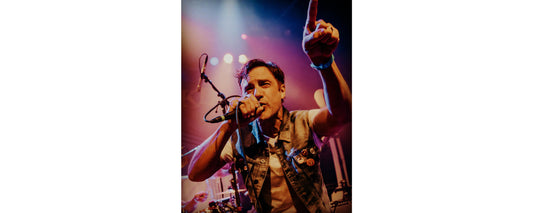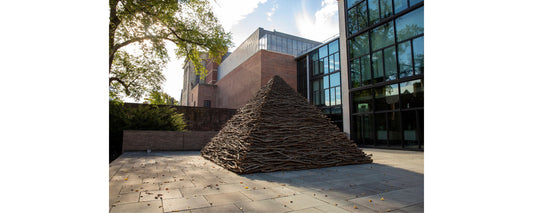This year, when Richard Levin stops being the head of all things Yale, he’ll leave another head behind for the university to remember him by.
Levin, who announced in August that he would retire as Yale’s president at the end of the current academic year, was brought into the position in 1993. To commemorate his inauguration, Yale alumnus Jeffrey Loria and a fellow New York art dealer, James Goodman, presented the university with a gigantic sculpture by Roy Lichtenstein called “Modern Head.”
Lichtenstein did not attend Yale, but the school has exalted him. Last year, Yale University Press published an important retrospective of his life and works. This year, the Yale Art Gallery reopened after years of renovations, and with the expanded gallery space the Lichtenstein paintings owned by the museum (including key works such as “Blam!”) have never looked better.
sponsored by
But “Modern Head” stands apart. It may have the sleek lines and edgy comic-book, caricature feel of Lichtenstein’s internationally known paintings, but it’s in a medium (stainless steel) which many don’t associate with him, and of a size (over thirty feet tall!) which makes even the huge blow-ups of comic-book panels and pulp-printing pixels in Lichtenstein’s paintings seem diminutive by comparison.
Possessing sharp edges (happily higher up, beyond the reach of most ordinary mortals), “Modern Head” has a satiric point. It’s meant to mock seminal 20th century “modern art” styles by such artists as Fernand Léger, who embraced cold mechanical forms and Industrial Age aesthetics. Lichtenstein apparently found such art cold and lifeless, so in “Modern Head” he created an extreme example.
It may be meant to mock, but the piece exudes its own beauty, especially in the way it is displayed at the bottom of Yale’s Science Hill. There, communing with trees taller than it is, in the park area half a block down Sachem Street from the Peabody Museum, and just down the hill from science laboratories and research buildings, “Modern Head” is in a perfect position to comment on the relationships among art, humanity, technology and nature.
The way “Modern Head” catches the sunlight can be blinding, but can also give the statue an ethereal aura. As imposing as this hard metallic monument can be, it’s also humorous and inviting. Kids play around its base. The Cupcake Truck often parks near the statue on weekdays, using it as a landmark when notifying customers who are craving the truck’s Red Velvet or Maple Bacon Walnut delicacies. “Don’t know exact parking location but we will be somewhere on Sachem Street near the Peabody museum or ‘the Modern Head’ artwork near Yale school of biz,” goes a sample info blast.
And how fitting is that? A statue commenting on the mechanistic inclinations of society, yet a society in which we still see a well-formed and forthright face, greeting a motorized conveyance bearing sweet handmade baked goods.
There’s at least one other Lichtenstein “Modern Head” out in the world, this one painted bright blue rather than just having its steel surface brushed to shimmering effect like the one at Yale. For a long time this blue Head was in New York, where it stood near the World Trade Center. In the wake of 9/11, it was used as a handy central message board for the FBI. That statue is now mounted at the South side of the Smithsonian American Art Museum in Washington, D.C.
Again, there’s an example of Lichtenstein’s art connecting breakdowns of the modern age and the innate need of real human beings to communicate. What better symbol of Yale University, or New York City’s business district, or Washington D.C.’s role as curator of the country’s treasures, could there be than a gigantic, unbreakable futuristic head—bursting with knowledge, surveying the landscape, transmitting thoughts and beaming down at our urban hustle and bustle with bucolic grace.
Let’s keep our modern heads about us in this pell-mell electronic, scientific yet deep-down emotional and humanistic age.
“Modern Head” by Roy Lichtenstein
Located outdoors at the corner of Sachem Street and Hillhouse Avenue in New Haven.
www.yale.edu/publicart/modernhead.html
Written and photographed by Christopher Arnott.








